Ændrew Rininsland
TY Copy Editor
Hotbox Magazine Managing Editor
aendrew@hotboxmagazine.com
www.seeds-marijuana.com
Since the 1960s, two diametrically- The government’s constantly Medicinal cannabis has always In the preceding paper, I have done Ændrew Rininsland is the Managing Editor of Hotbox Magazine (hotboxmagazine.com) and Copy Editor at
opposed views of drug
use have appeared.
The view represented by the government
and medical establishment
has largely regarded all drug usage
outside the realm of the medical
activity to be considered an abuse
with a negative impact on society
(Martel 59), while critical perspectives
have argued that the rationale
for using drugs cannot be reduced
to mere abuse or addiction (60).
Instead, many have argued that
drugs are an intrinsic part of spiritual
experiences (i) or can be used
to expand and better understanding
of the human condition (ii).
Central to this discussion are concerns
about the health of drugusing
individuals, especially since
the start of the modern War on
Drugs in the 1970s.
Most notably with regards to the
question of cannabis prohibition,
professional experts have
thus been employed in varying
capacities by both sides in an
attempt to discredit the other.
Looking through the lens of
these differing professional opinions,
we can begin to see many
of the socio-political factors contributing
to a public “credibility
gap” in contemporary discussions
on both the legalization
and medicinal use of cannabis.
As a result of this “credibility
gap,” critical voices may emerge
from non-professional bodies
(Epstein 411).
It is therefore in constructing a
base of “lay-experts” willing to
debate the effects of cannabis on
health while simultaneously using
the language of expert and professional
bodies that medicinal
cannabis advocacy groups are
achieving a degree of credibility on
an issue that in the past has largely
been restricted to professional and
government discussions.Prohibition before
the ’70s —
From Bootleggers to
Hippies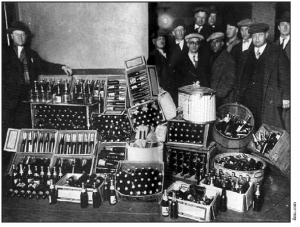 The 20th century is marked by
The 20th century is marked by
multiple failed attempts by North
American governments to control
the use of psychotropic drugs. This
is not a mere matter of opinion:
from any objective perspective,
attempts to prohibit the use of
drugs have failed miserably, both in
achieving their original intent and
exacerbating a host of social, political
and culture problems.
Beginning with opium prohibition
in 1914 in the U.S., North
American governments have taken
an essentially reactionary approach
to drug use and abuse (Whitebread
1995). Though a comprehensive
analysis of all these policies and
why they can be considered failures
is far beyond the scope of this
paper, two examples may perhaps
serve to illustrate why this is so,
and also to facilitate understanding
of the public reaction to the Nixonera
Drug War. In this short historical
outline of alcohol and cannabis
prohibition, I hope to demonstrate
that the original decision to regulate
cannabis was based on racism and public pressure — not professional
advice. With the advent of
the War on Drugs and the change
of focus to the personal health
effects of cannabis, the conflicting
professional opinions allowed
space for critical discourses to
appear and allowed the lay-expert
advancement of the medicinal
cannabis movement.
According to Dills, Jacobson and
Miron, “[Alcohol] prohibition had
a substantial short-term effect but
roughly a zero longer-term effect on
drunkenness arrests” (4). They
then go on to compare cirrhosis
rates (The other indicator often
used to determine the effectiveness
of alcohol prohibition) to find similar
implied behaviours, leading the
authors to conclude that alcohol
prohibition had a limited effect on
national consumption (4).
However, along with having no
long-term effect on alcohol consumption,
alcohol prohibition also
had very negative social consequences
as well. By putting distribution
and sale of alcohol into the
hands of organized crime, gangsters
such as Al Capone and Johnny
Torrio were able to amass much
wealth and power, resulting in not
only empowering the Mafia but
also causing much unnecessary violence
(Whitebread 1995). (iii)
By the 1930s, the social consequences
of alcohol prohibition
were becoming much too great and
the government ended it
(Whitebread 1995). However, in an
act of what can only be considered
incredible short-sightedness, the
government would embark upon a
new and equally disastrous — but
much more long-lived — attempt
to control public use of psychotropics,
less than half a decade after the
fall of alcohol prohibition. The
1937 Marihuana Tax Act in the
United States was passed largely as
a result of racism towards Mexican
migrant workers and black jazz
musicians — for an example
demonstrating the validity of this,
one only need to look at Federal
Bureau of Narcotics Chief Harry
Anslinger’s testimony at a 1948
Senate hearing where he was
requesting more agents to pursue
drug law violations. When asked
who was violating marijuana laws,
he told the committee that “musicians”
were the culprit: “And I
don’t mean good musicians — I
mean jazz musicians.” (1995)
My point in this is that the regulation
of cannabis was never initially
about the effects of it on the health
of individuals. When the government
first sought to regulate
cannabis in 1937, Chief Counsel to
the American Medical Association
Dr. William C. Woodward testified
by saying “The American Medical
Association knows of no evidence
that marijuana is a dangerous
drug” — however, his opinion was
promptly disregarded and cannabis
was prohibited anyway, with one of
the bill’s proponents outright lying
about Woodward’s position
(Whitebread 1995). The only other
piece of medical testimony was
given by a researcher now believed
to have been falsifying his results
(1995). 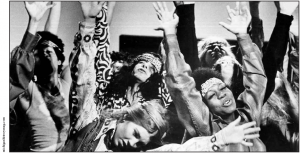
Cannabis prohibition in Canada
followed a similar policy arc to that
of the United States, though it preceded
it by over a decade. There are
two theories for why this is so.
Many argue that the 1922 publication
of Emily Murphy’s The Black
Candle was one of the driving factors
for adding cannabis to the
Confidential Restricted List
(Canada’s precursor to the U.N.
Single International Convention on
Narcotic Drugs’ schedule system),
while Carstairs argues that
Canada’s inclusion in several
League of Nations-sponsored narcotics
conventions was more instrumichiganhistorymag mental in shaping this policy (31).
Regardless, it took until the 1960s
for law enforcement to begin paying
any attention to cannabis—
between 1946 and 1961, it was
involved in only two per cent of all
drug arrests (112).
By the mid-’60s, the legalization of
cannabis had become a much larger
social issue than it had in the
past. The proliferation of cannabis
in the U.S. and its migration north
to Canada resulted in an increased
acceptance by youth (Leading one
studier of high school drug use
rates to dourly conclude that the
entire continent would be smoking
it within a decade given adoption
rates in the early ’70s.), and also an
increased crackdown by law
enforcement (Martel 30; Spicer
2002). The debate was fullyformed
in Canada by the 1970s, to
such a point that the government
questioned legalizing it for the first
time since its prohibition in 1923.1970 to 2009 —
The War On Drugs
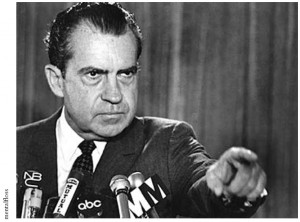
changing rationale for criminalizing
cannabis users reached a head
in 1972 when U.S. President Nixon
launched the War On Drugs. Once
demonized for allegedly causing
violence amongst minorities, then
demonized as a tool used by
Communist Russia to turn
American youths into pacifists at
the height of the Cold War, Nixon’s
launching of the War on Drugs thus
aimed to end illicit drug use in the
United States using methodology
for once more dependent upon
expert opinion than the more racist
and paranoid rhetoric of the early
“Reefer Madness” years
(Whitebread 1995). In 1972,
Nixon created the Shafer
Commission to investigate the
harm of cannabis use, which concluded
that marijuana should be
decriminalized (Shafer 1972). It
largely argued that cannabis use
was no more a danger than alcohol
use and it was likely unconstitutional
to enforce its ban federally
(1972). Nixon rejected these findings
and the trend for the next two
decades became that an incredible
amount of conflicting information
was given to the media, forcing the
public to come to their own conclusions
regarding cannabis.
On one hand, a lot of very poor
research was done. A good example
of this is the 1977 study
“Effects of Cannabis Sativa on
Ultrastructure
of the Synapse
in Monkey
Brain” by J.W.
Harper and
R.G. Heath,
followed by
Heath’s other
two studies,
“ C h r o n i c
M a r i j u a n a
Smoking: Its
effects on
Function and
Structure of the
Primate Brain”
(1979) and
“Cannabis Sativa Effects on Brain
Function and Ultrastructure in
Rhesus Monkeys” (1980). These
echoed the now-familiar paranoia
about the alleged brain damage
potential of cannabis, but also supposedly
backed it up with medical
analysis. The result was the widelydistributed
government anticannabis
“This is your brain on
drugs” campaign, wherein those
who frequently use the drug are
engaging in an act compared by the
commercial to cracking their heads
open and frying their brains on a
skillet, and “any questions” had to
be deferred until these assertions
were refuted (often only in the scientific
press) by other experts. Such
was the case when 1970 Nobel
Prize Winner Julius Axelrod investigated
the study further, only to
realize that the method used by
Heath et al was essentially asphyxiating
the rhesus monkeys being
studied. (iv) Other government-initiated
and independent multinational
studies (Including the Le
Dain Commission, Canada’s version
of the U.S. Shafer
Commission) have indicated that
smoking cannabis is no more harmful
than drinking, and likely much
less harmful than smoking cigarettes
(Le Dain 1972). For instance,
at least one study discovered that
Delta-9 Tetrahydrocannabinol
(THC, the main psychoactive component
in cannabis) potentially
even has retrocarcinogenic properties,
a finding that correlates to an
earlier study in the ’80s that found
cannabis-smoking patrons of
“compassion clubs” in San
Francisco had no higher incidence
rates of emphysema or lung cancer
than the non-smoking control
group (National Toxicology
Program 1996; Vinciguerra 1988).
This contradicts other work with
relation to the effects of cannabis
on the respiratory system, the most
recent of which states the tar output
of a single joint is about fives
that of an equivalent-sized tobacco
cigarette (Aldington 2007).
A few factors had an impact on the
professional discussion. The U.S.
Drug Enforcement Agency has the
ability to block research proposals
dealing with scheduled substances,
causing a continued federal
monopoly on cannabis research
(Canadian AIDS Society 43).
Because of prohibition, the presmentalfloss ence of a law enforcement body in
what should be essentially a medical
discussion clouds matters
greatly; how much research has
been adversely affected by their
involvement is anyone’s guess. The
social stigmatization of cannabis
users and their association with
bohemian culture also likely has
had an effect with regards to doing
serious research on the topic (41;
45).
Meanwhile, to add further confusion,
the 1980s brought forth the
medicinal argument to the broader
discussion of cannabis prohibition
in North America. Not only were
expert opinions about the health
impacts of cannabis contradictory,
but here we see also the emergence
of a group with the belief that this
much-maligned drug can actually
be therapeutic. It’s not really a new
belief; cannabis has been used by
herbalists for millennia and has
been proscribed for everything
from failing eyesight to erectile dysfunction
(Spicer 2002). In fact,
cannabis even existed in the pharmacopoeia
of the U.S. from 1850
until 1942. Statements by various
government officials seem to back
this up: in 1988, U.S. Drug
Enforcement Agency (DEA) administrative
law judge Francis L.
Young noted that “in its natural
form, [cannabis] is one of the safest
therapeutically active substances
known,” and the 1972 Canadian
Le Dain commission reached similar
conclusions (Young 1988;
LeDain 1972). Further, the 1978
creation of the U.S. Compassionate
Investigational New Drug program,
in which the government
supplied cannabis to a group of
people who exhibited clear medical
necessity, seems to acknowledge its
medicinal benefit (“U.S. v.
Randall” 1976). Yet at the same
time, cannabis has always existed
as a Schedule I drug in the United
States, implying it has no medicinal
benefit whatsoever (DEA 2002). To
this day, even though one in four
Americans now live in a state
where medical marijuana initiatives
have been passed via referendum,
this classification has allowed federal
police to invade otherwise lawabiding
clinics in the same way they
would a drug kingpin’s house. As
such, with such clear contradictions
between government policy and
action, citizens were forced to form
their opinions about cannabis use
outside the confused opinions of
established science and medicine.
Suffice to say, by the mid-1990s,
the public was in a state of confusion
about not only the legal state
of cannabis, but also the effects of
smoking it on the body. Further
international medical research by
independent groups also contributed
to arguments on both sides
of the discussion. In particular, the
emergence of Californian medicinal
marijuana dispensaries
(“Compassion Clubs”) initially
designed to care for AIDS patients
in the San Francisco area and
extended via Proposition 215 contributed
to public discussion on this
topic (“Proposition 215” 1996).
The emergence of the AIDS epidemic
in the 1980s was a factor
aiding the public discourse on
medicinal cannabis as the so-called
“munchies”—the occasional cravings
for food that are more often
than not a nuisance for cannabis
smokers—were found to be in fact
quite an effective method for combating
wasting syndrome in
HIV/AIDS patients (Haney et al
2005). The establishment of a federal
medicinal cannabis program in
Canada in the late ’90s furthered
the medicinal argument as well
(Health Canada 2009).
Meanwhile, cannabis remained an
illegal drug with far harsher penalties
for possession than prescription
drugs. Further, patients have had
(and continue) to go through a long
and difficult process in order to get
a medical marijuana exemption,
exasperated by differing regional
regulations towards medicinal
usage, cannabis’ continued status
as a Schedule 1 drug in the U.S. (As
well as the closing of that’s country’s
federal medicinal program),
and very limited and poor program
implementation in Canada. Into
this environment, the modern citizen-
driven medicinal cannabis
movement emerged.Where we are now:
the 21st century
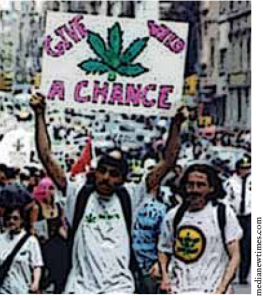
been a citizen-driven movement.
Both the creation of the incrediblyguarded
and now-defunct U.S.
Compassionate Investigational
New Drug program and the modern
Health Canada system resulted
from medical necessity cases
brought before each country’s
respective Supreme Courts by
patients (“Randall v. U.S.” 1975;
“R. v. Parker” 2000). Above I have
outlined some of the difficulties in
creating a scientific consensus
towards the health effects of
cannabis use and the resulting legislative
schizophrenia that ensued.
The resulting loss in scientific credibility
thus has forced a unique
cooperation between activists, scientific
experts and citizens at large.
According to Starr in Epstein, “[scientific]
authority … includes not
just social authority rooted in a
division of labour or in organizational
hierarchies … but also cultural
authority, which rests on the actor’s capacity to offer what is
taken to be truth” (Epstein 411).
Scientific authority becomes questioned
with the creation of what
Epstein calls a “credibility gap,”
wherein the failure of experts to
quickly solve a problem not only
increases popular resentment of
experts, but also diminishes the
credibility of the medical establishment
while simultaneously creating
space for critical opinions (411). In
this the press played a fundamental
role, in communicating both expert
opinion and expanding the discussion
to social and political contexts.
However, it has been a combination
of specialty media, activist
organizations and increased communication
technology that have
contributed the most interesting
critical discourses.
In his discussion of how the
HIV/AIDS community contributed
to the global discussion about clinical
trials through the construction
of lay expertise, Steven Epstein analyzes
how AIDS activists have
established medical credibility and
how their particular knowledge
effects the broader discourse. Using
the tools of identity politics established
by the gay rights and female
health movements, AIDS activists
were able to gain credibility to the
scientific establishment and thus
act as lay-experts (Epstein 415). He
notes four ways in which these
non-expert groups were able to
gain credibility: through the acquisition
of cultural competence,
establishment of political representation,
the combination of epistemological
and ethical claims-making
and taking sides in pre-existing
methodological disputes (410). In
many ways, the modern medicinal
cannabis movement is enormously
similar, both in its composition and
execution. It too is comprised of
members of the “new middle-class”
with a lot of cultural capital (414;
NORML, “Who Are You?” 2009);
as well, it has begun an extensive
project to create cultural compe- tence by adopting the vocabulary
of the professionals they are engaging
with. New political representation
is forming, and the multifarious
reach of the issue — into discourses
as varied as environmentalism
(As Hemp, cannabis’ muchmaligned
and equally-contraindicated
non-psychoactive relative
would be an ideal biofuel)(Reason
2008) and criminal justice — not
only facilitates, but requires, sidetaking
in professional discussions.
And, as an issue that crosses all
gender, race and class lines, the
opponents of the War on Drugs
need only point to the massive
number of incarcerated non-violent
drug offenders to argue not only
the importance of ethical and epistemological
claims-making, but the
moral necessity of it.
The so-called “Cannabis Media”
originates in some capacity with the
founding of High Times in 1974 by
Tom Forcade (Nocenti 2004).
Originally started as a lifestyle
magazine fashioned after Playboy,
High Times quickly became one of
the few periodicals printing a wide
range of scientific opinion and
commentary on the topic of
cannabis. On one hand, by publishing
the gamut of medical and government
literature on the topic of
cannabis to a broader audience,
more obscure expert literature
ignored by the mainstream press
was communicable to a non-expert
mass. The success of High Times
spawned several competitors:
Skunk Magazine and 420
Magazine in the U.S.; Cannabis
Culture and Treating Yourself in
Canada; Weed World in the United
Kingdom, among others. Without
dwelling on the particulars of any
of these periodicals, the mere presence
of a specific, distributed publishing
market relating to this topic
is interesting in and of itself. The
fact many of these periodicals utilize
decentralized Internet-based
production models reliant on heavy
community involvement is even more so. In this way, by involving
larger publics and civil society
organizations such as activist
groups in this publishing process,
non-expert and non-governmental
actors are allowed to contribute to
the dissemination of critiques of the
existing discussion relating to government
control of cannabis. As a
social movement, proponents of
cannabis legalization (whether generally
or for medicinal purposes)
have been able to aid in the construction
of social meanings and
forms of knowledge like few others
in history and it is perhaps at least
partially because of this that support
for cannabis legalization has
surged to 44 per cent nationally in
the U.S. in recent months
(NORML 2009). (v)
In his discussion of HIV/AIDS
activists, Epstein notes “The most
crucial avenue pursued by treatment
activists in the construction of
their scientific credibility has been
precisely the acquisition of such
competence by learning the language
and culture of medical science”
(417). However, unlike the
AIDS activists studied by Epstein,
the cannabis legalization movement
has access to a resource quite
unique to its historical era — the
Internet. As such, an incredibly
wide range of resources is now
available to an independent
researcher wishing to pursue an
explorative literature analysis of
existing medical sources. In the ’70s
and ’80s, a comprehensive literature
review of a topic such as the
effects of cannabis on ADHD
would have been impossible due to
an incredibly limited amount of
existing research, but also due to
greater constraints on access to
physical media. The ability of layexperts
to construct evidence to
their claims using the language and
data of the medical establishment
was severely limited due to the
arcane nature of medical journals
— short of having access to a medical
library or having a subscription to a host of medical journals, constructing
authoritative literature
reviews was next to impossible for
non-experts. With the advent of
online journal databases and services
such as Google Scholar, however,
a simple text query can be used to
locate an enormous wealth of
obscure and arcane academic information.
The result of this is an
intrinsic movement towards using
professional language — one might
be quite surprised while looking
through the pages of Treating
Yourself and find them devoid of
the language “stoners” are usually
stereotyped with, largely as a result
of this emphasis on expert communication.
It is worth noting given
that it indicates this shift in the discussion
surrounding cannabis
usage. These aforementioned
activist efforts — groups such as
the U.S.-based National
Organization for the Reform of
Marijuana Laws (NORML) and
Law Enforcement Against
Prohibition (LEAP) — also play a
part in communicating expert literature
to non-expert groups, who in
turn adopt the language in communicating
movement ideas to the
broader public. Further, compared
to a few years ago, there are now
no less than four online cannabis
news aggregators (420.com,
Stopthedrugwar.org, MapInc.org
and Hotbox’s project,
Smokkr.com), allowing an editorial
piece about medicinal cannabis in a
small Australian newspaper to be
propagated to dozens of different
websites across the globe instantaneously.
This has the effect of
allowing members of the community
to respond immediately to factually-
inaccurate articles (Thus simultaneously
reifying the epistemological
basis of pro-cannabis arguments
and undermining the validity of disputed
expert literature), while also
creating an enormous wealth of
easily searchable and very topical
information for those doing
research. The result is that while
the medicinal cannabis movement
and the cannabis legalization movement have different aims (The former
often being more conservative
and only wishing to legalize for
medical reasons and the latter
advocating for legal sales and use
by the general public, though there
is often overlap), their use of similar
expert literature in arguing similar
points allows both movements
greater cultural credibility through
shared professionalization of the
language of the discourse itself.
The second way in which layexperts
achieve cultural credibility
is through established representation.
Epstein refers to this as a
“credibility achievement” insomuch
that it shows activists have
sufficiently organized themselves in
a capacity where they can argue
that they are the voice of a specific
group (Epstein 419). Medicinal
cannabis patients have done this
through representative advocacy
groups such as NORML, the
Marijuana Policy Project (MPP)
and LEAP, which have been instrumental
in current legislative challenges
with regards to medicinal
cannabis. 13 U.S. states (Alaska,
California, Colorado, Hawaii,
Maine, Michigan, Montana,
Nevada, Oregon, Rhode Island,
Vermont and Washing) have made
some kind of exemption for medicinal
cannabis, with Arizona and
Maryland both having sympathetic
legislation (“Active State Medical
Marijuana Programs” 2009).
These are all contemporary political
events, with the first state to
pass pro-medicinal cannabis legislation
being California in 1996.
Further, it was NORML that provided
professional support to
patients during the initial U.S. federal
cases arguing their necessity for
medicinal cannabis. While patients
taking an intelligent and proactive
role in the decision making process
were crucial to this legislation being
passed, the actions of advocacy
groups such as NORML and LEAP
had effects as well. First, they galvanized
the community through
proliferating related news and studies.
While the cannabis media is
beginning to show signs of both an
external and internal battle for
credibility, groups such as NORML
and LEAP were founded with the
intent to promote alternatives to
existing drug policies, with an
empirical edge from the outset. In
particular, NORML has funded a
significant amount of cannabis
research, with results supporting a
range of arguments: from the more
general (Analyzing U.S. Substance
Abuse and Mental Health Data
Archive figures in order to ascertain
cannabis user demographic data) to
the highly political (Measuring and
collecting drug-related sentences as
defined by racial demographics) to
ones focused more on the medical
discussion (Particulate analysis to
determine whether joints, pipes,
bongs or vaporizers are the healthiest
smoking method). In doing so,
members of advocacy groups such
as NORML straddle the line
between lay-experts and professional
researchers while also providing
new data to lay-experts pursuing
the argument. Most importantly,
however, groups such as
NORML (And MPP, which tends
to focus more on policy and key
political actors) indicate a growing
political representation on behalf of
cannabis users. After U.S. President
Obama’s online “Town Hall”
meeting — where Internet surfers
were asked to submit personal
questions for Obama to be
answered, resulting in cannabisrelated
questions receiving enough
votes to occupy 8 of the top 15
questions and a snub from the
President — groups such as
NORML received a massive surge
in funding, causing a chain reaction
wherein many mainstream media
outlets began publishing OpEd
pieces about the topic of general
cannabis legalization (“Fundraising
jump” 2009). The resulting
response has since fueled even more
discussion — as an example, my
Smokkr project has seen a 15-fold
increase in the number of links
relating to OpEd pieces mentioning legalization when comparing the
periods from September 1 to
December 31, 2008 and January 1
to April 30, 2009. The result is that
these advocacy bodies are able to
relate their message to a far greater
population and thus drive popular
support, eventually leading to even
greater potential for political adoption
by elected politicians. Because
advocacy groups such as NORML
and MPP are seen to be representative,
established politicians and
members of civil society such as the
media often contact them. This in
turn gives lay-experts more cultural
credibility, especially when presenting
findings under the aegis of a
national organization. Naturally, it
also increases the larger public
awareness of the issue (And thus
facilitating a need for experts to
drive public understanding,
whether lay- or not) when media
consults these organizations.
According to Epstein, “A third
credibility tactic employed by treatment
activists consisted of yoking
together methodological (or epistemological)
arguments and moral
(or political) arguments so as to
monopolize different forms of credibility
in different domains”
(Epstein 420). He gives the example
of clinical trials with AIDS
patients, wherein the initial subject
populations consisted largely of
middle-class white men. Treatment
activists thus argued trials should
more accurately reflect the demographics
afflicted by HIV/AIDS and
thus all affected populations must
be given access to the trials (420).
“Activists therefore pushed simultaneously
for a morally credible
policy promoting fair access to
experimental drugs and for a scientifically
credible policy for acquiring
generalizable data,” in short
giving this representative activist
body both the moral and scientific
high-ground (421). In much the
same way, the medicinal cannabis
community uses two strains of
arguments. On the epistemological
end, it argues that cannabis has far
fewer side effects than most of the
prescription medications available
on the market, and is fundamentally
harder to overdose on given the
incredibly enormous LD-50 of
THC. Many in the medicinal community
regard the scheduled nature
of cannabis as ludicrous: in
Treating Yourself issue 10, writer
Wendal Grant compares the enormous
and incredibly daunting list
of side-effects for the pharmaceuticals
prescribed by doctors, with the
comparatively-harmless effects of
cannabis (Grant 2007). From this
emerges the moral claim medicinal
cannabis users are able to make:
given that the professional consensus
is perceived to have a “credibility
gap” while simultaneously
claiming that a plant with no overdose
or physical addiction potential
and incredibly benign side-effects is
an enormously harmful drug (even
while the patient is experiencing
relief from it), the patient is forced
into a moral quandary. He or she is
thus forced to either violate professional
opinion and the law itself in
order to obtain the relief sought, or
take a cocktail of potentially-harmful
pharmaceuticals, with often
additional pharmaceuticals needed
to counter the side-effects of the
first, which may not even offer the
same relief as cannabis. Thus, as
claim-makers with regards to their
own personal health, medicinal
cannabis patients are thus able to
morally argue that it should be
their decision as to how they medicate
— not the government’s.
Lastly, much like the AIDS treatment
activists mentioned by
Epstein, medicinal cannabis
patients often take sides in preexisting
professional debates (421).
This can be seen in community
response to findings — as an example,
when a New Zealand research
lab released findings displaying levels
of psychosis in cannabis users,
Treating Yourself community member
Ally (Or “pflover”) produced a massive literature review of various
psychosis factors for publication in
the upcoming issue. At once,
Ally/pflover sided with creators of
the study in approving their
methodology, while at the same
time expanding on their findings
and disagreeing with their conclusion
(pflover 2007). While the
media was relaying the findings as
indicating cannabis users were
more prone to psychosis, Ally’s
analysis demonstrated that, compared
to many other common environmental
factors, cannabis usage
had a comparatively minor effect
(18). This at once validated one set
of professional opinions (i.e., in
terms of methodology) and sought
to clarify public understanding of
findings, while using language
understandable by both a public
and professional audience.
Contributions on behalf of layexperts
in the medicinal cannabis
community give scope to professional
findings while contributing
both localized knowledge and
stakeholder opinion to a broader
expert discourse on the topic.Conclusion:
We only know
what we know
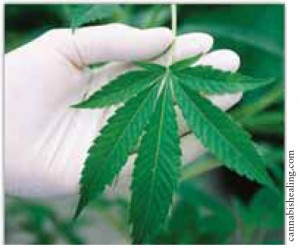
essentially two things: first, I discussed
the socio-political events
which aided in the widespread public
confusion with regards to the
health effects of cannabis, before
then beginning a discussion of how a combination of lay-experts, specialty
media and advocacy groups
inform North American perceptions
of medicinal cannabis usage.
While the general discussion of
cannabis legalization inevitably
overlaps with the medicinal at
points, I have endeavored to isolate
the elements specific to the medicinal
cannabis movement so as to
better illustrate the large number of
lay-experts involved with that
group. In doing so, I hope to have
demonstrated the enormous potential
of both the general legalization
and medicinal cannabis communities
in both advancing discourses
on drug policy and patient use of
drugs, but also in finally ending the
expensive and ineffective prohibition
of cannabis for good.
Treating Yourself. This article is licensed using a Creative Commons Attribution-ShareAlike license with the most
recent version always linked to at aendrew.com/forpatientsbypatients
Endnotes:
i: In particular, see Timothy Leary’s The Politics of Ecstasy. Page 44: “If you are serious about your religion, if you really wish
to commit yourself to the spiritual quest, you must learn how to use psychochemicals. Drugs are the religion of the twenty-first
century. Pursuing the religious life today without using psychedelic drugs is like studying astronomy with the naked eye because
that’s how they did it in the first century A.D., and besides, telescopes are unnatural.”
ii: Alexander Shulgin, the discoverer of MDMA, comments in PiHKAL – A Chemical Love Story: “I decided to devote whatever
energies and skills I might possess to unraveling the nature of these tools for self-exposure. It has been said that wisdom is
the ability to understand others; it is the understanding of yourself that is enlightenment. I had just found my learning path.”
(17)
iii: This section essentially summarizes Charles Whitebread’s “The History of the Non-Medical Use of Drugs in the United
States.” Whitebread is one of the most authoritative scholars on cannabis prohibition in the U.S. and his telling of history on
the topic is amongst one of the most detailed and balanced I’ve read. Given that my thesis is more to demonstrate the effects of
the medicinal cannabis movement in constructing regimes of lay-experts than to detail the intricacies of cannabis prohibition,
Whitebread’s analysis will suffice.
iv: Axelrod testified to the 1974 Senate Subcommittee to Investigate the Administration of The Internal Security Act and Other
Internal Security Laws with regards to Heath’s study. He said: “I respect Dr. Heath; he is a fine neurologist, but the doses he
has given for the acute effect, for example, would be equivalent to smoking a hundred marihuana cigarettes, a very heavy dose
of marihuana. And the amount he has given for the chronic effect represents smoking 30 marihuana cigarettes 3 times a day
for a period of 6 months.” See: http://www.archive.org/stream/marihuanahashish00unit/marihuanahashish00unit_djvu.txt
v: This was written in April when support was at 44 per cent. A May Zogby poll now places it at 52 per cent nation-wide, less
than half a year later. If we are not near a tipping point now, I do not know when we will be.
See:http://www.salem-news.com/articles/may062009/mj_zogby_5-6-09.php
Works Cited:
“Active State Medical Marijuana Programs.” 01 Dec 2004.
NORML. 4 May 2009 .
Aldington, S. “Effects of cannabis on pulmonary structure, function
and symptoms.” Thorax 62(2007): 1058-63. Print.
Belville, Russ. “Who Are You? US Government Statistics on Adult
Marijuana Users.” 10 Apr 2009. NORML. 4 May 2009 .
“Cannabis as Therapy for People Living with HIV/AIDS: “Our
Right, Our Choice”.” 06 July 2006. Canadian AIDS Society. 4 May
2009 .
Dills, Angela K. “The Effect of Alcohol Prohibition on Alcohol
Consumption: Evidence from Drunkenness Arrests.” Working
paper. 4 May 2009 .
Epstein, Steven. “The Construction of Lay Expertise: AIDS Activism
and the Forging of Credibility in the Reform of Clinical Trials.”
Science, Technology, & Human Values 20(1995): 408-437. Print.
“Frequently Asked Questions: Medical Marijuana.” 13 July 2005.
Health Canada. 4 May 2009 .
Grant, Wendal. “The Side Effects of Pharmaceutical Drugs.”
Treating Yourself 10(2007): 45-47. Print.
Hamby, Peter. “Fundraising jump for marijuana group after Obama
snub.” CNN Political Ticker. 28 Mar 2009. CNN. 4 May 2009 .
Haney, M, Rabkin, J, Gunderson, E, and Foltin, RW. “Dronabinol
and marijuana in HIV(+) marijuana smokers: acute effects on caloric
intake and mood.” Psychopharmacology 1(2005): 170-8. Print.
Heath, R.G., A.T. Fitzjarrell, and C.J. Fontana. “Cannabis sativa:
effects on brain function and ultrastructure in rhesus monkeys.”
Biological Psychiatry 15(1980): 657-90. Print.
Heath, R.G., Fitzjarrell, A.T., Garey, R.E., Myers, W.A. Chronic
Marijuana Smoking: Its effects on Function and Structure of the
Primate Brain, Marijuana Biological Effects. Oxford, England,
Plenum, 1979.
Heath, R.G., Harper, J.W. and Myers, W.A. “Effects of Cannabis
sativa on ultrastructure of the synapse in monkey brain.” Journal of
Neuroscience Research 3(1977): 87-93. Print.
Le Dain, Gerald. “The Report of the Canadian Government
Commission of Inquiry into the Non-Medical Use of Drugs.”
Schaffer Library of Drug Policy. 1972. DRCNet. 4 May 2009 .
Martel, Marcel. Not This Time. 4. Toronto: University of Toronto
Press, 2006. Print.
“Proposition 215: Text of Proposed Law.” California Secretary of
State. 4 May 2009 .
National Toxicology Program, “NTP Technical Report on the
Toxicology and Carcinogenesis Studies of 1-Trans-Delta9-
Tetrahyrdocannabinol (CAS No. 1972-08-3) in F344/N Rats and
B6C3F1 Mice (Gavage Studies).” Schaffer Library of Drug Policy.
Nov 1996. DRCNet. 4 May 2009 .
Nocenti, Annie. The High Times Reader. New York: Nation Books,
2004. Print.
pflover, “Insane in the Hemp-Brain?.” Treating Yourself 10(2007):
18-29. Print.
“R. v. Parker.” 08 Oct 1999. Ontario Courts. 4 May 2009 .
Shafer, R.P. “Marihuana: A Signal of Misunderstanding.” Schaffer
Library of Drug Policy. Mar 1972. DRCNet. 4 May 2009 .
Smith-Heisters, Skaidra. “Illegally Green: Environmental Costs of
Hemp Prohibition.” 13 Mar 2008. Reason Foundation. 4 May 2009
.
Spicer, Leah. “Historical and Cultural Uses of Cannabis and the
Canadian ‘Marijuana Clash’.” Library of Parliament. 12 Apr 2002.
Senate Special Committee On Illegal Drugs. 4 May 2009 .
U.S. Drug Enforcement Agency, “DEA, Title 21, Section 812.” 01
Feb 2002. U.S. Department of Justice. 4 May 2009 .
“U.S. v. Randall.” 24 Nov 1976. Drug Law Reporter. 4 May 2009 .
Vinciguerra, T. “The use of inhalation marijuana as an antiemetic for
cancer chemotherapy.” New York State Journal of Medicine Oct
1988 525-527. Web. 4 May 2009.
Whitebread, Charles. “The History of the Non-Medical Use of
Drugs in the United States.” Schaffer Library of Drug Policy. 1995.
DRCNet. 1 May 2009 .
Young, Francis. “Marijuana Medical Rescheduling Petition.” 06 Sep
1988. Family Council on Drug Awareness. 4 May 2009 .
“Zogby Poll: Nearly Six Out Of Ten West Coast Voters Support
Taxing And Regulating Marijuana Like Alcohol National Support
For Pot Legalization Grows To 44 Percent.” 19 Feb 2009. NORML.
4 May 2009

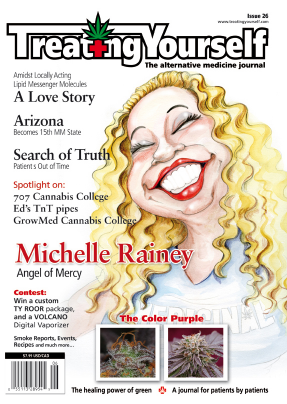


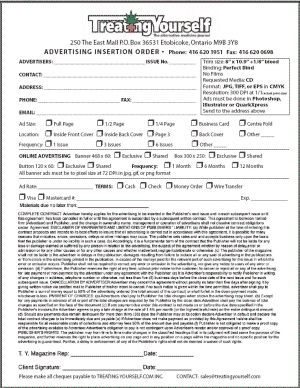 Contains Introduction Letter, Rate Card & Insertion Order Form
Contains Introduction Letter, Rate Card & Insertion Order Form
If only more people could read this!